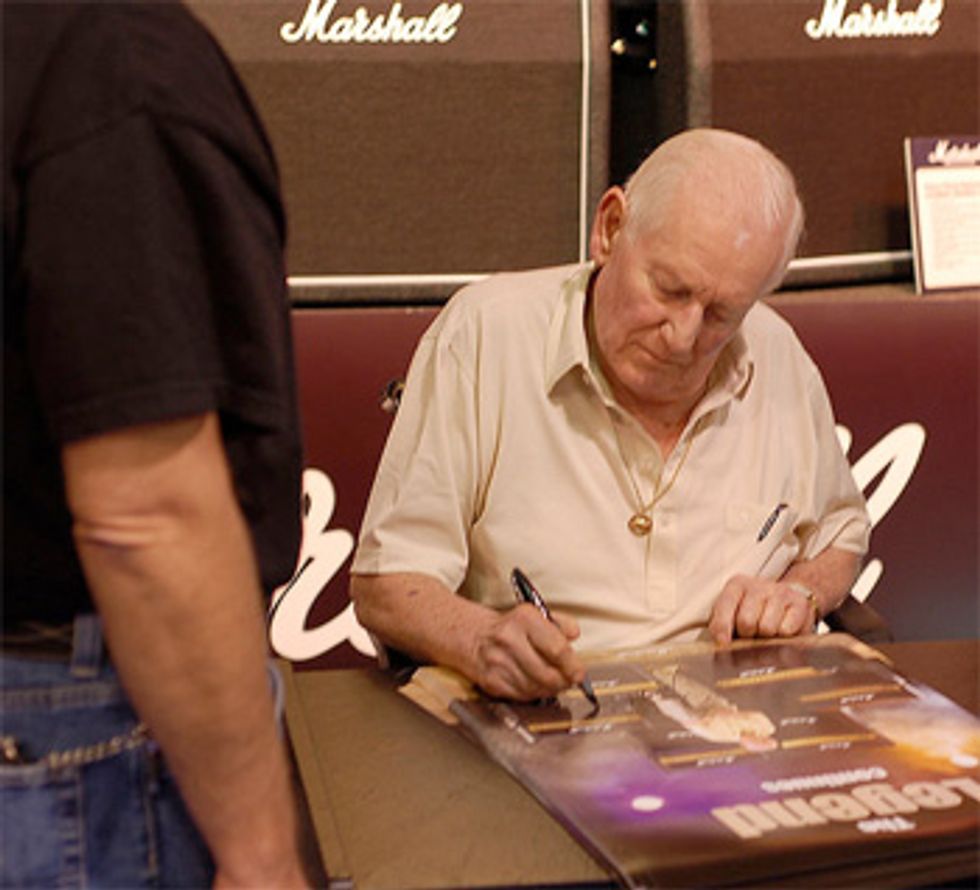It''s no exaggeration to say that Marshall forever changed the sound of rock ''n'' roll with his guitar amps.

Marshall signs autographs for fans at Summer NAMM 2007.
Photo: Penmachine.
London (April 5, 2012) — Like so many guitarists around the world, we are deeply saddened to hear that Jim Marshall—the creator of the iconic Marshall amplifier—died today at age 88. According to his family, Marshall was suffering from cancer and passed away at a UK hospice after a series of strokes.
It's no exaggeration to say that Marshall—affectionately known as “the Father of Loud"—forever changed the sound of rock 'n' roll with his guitar amps.
Marshall began his business in 1962 with a small drum shop in London. When Pete Townshend, Ritchie Blackmore, and other British rockers suggested he produce and sell guitar gear (they were keen to have an alternative to expensive imported Fender amps), Marshall began developing prototypes with technicians Ken Bran and Dudley Craven. After hearing the sixth prototype, which was inspired by the 4x10 Fender Bassman, Jim pronounced that the "Marshall sound" was born.
Before long, Marshall and his engineers had tweaked their Fender-derived circuit to produce a distinctive and original tone that was raw, rich, and aggressive—perfect for a new form of rock that was emerging in England and had little to do with the glistening, reverb-drenched sound of surf music that was ruling America at the time.
With the shop's first production amp, the JTM 45, Marshall had discovered the voice of hard rock. Other early innovations included the 4x12 cabinet, which quickly led to the dual-cab full stack—a tower of power that looked as impressive as it sounded.
A young Eric Clapton used to practice at Marshall's shop, and at his request, Marshall built Clapton a 2x12 combo. When Clapton cranked it to amplify his 1960 Les Paul in the studio with John Mayall's Bluesbreakers, the world got its first taste of a throaty, singing sustain that was eventually dubbed "woman tone." Before long, Marshall amps became synonymous with rock's mighty roar, a fact that remains true today.
Owning a Marshall stack was—and still is—a dream for aspiring rockers around the world. In 1970, this writer acquired two full 100-watt Marshall stacks (of course, these were old-school, non-master heads—all that was available at the time). Our trio hoped to be the next Cream, so the bass player was similarly equipped with his dual Marshall stacks. Perhaps there are audience members from our shows in Germany whose ears are still ringing.
A cranked Marshall unleashes an unforgettable sound—one so potent that it often changes lives. For that, and all the other ways you enriched our work, we thank you, James Charles Marshall. Rest in peace.

